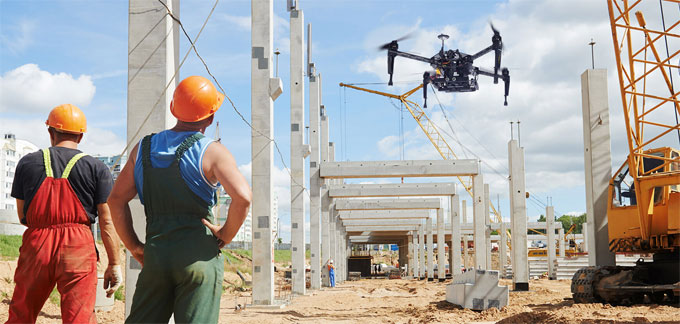
Five Ways to Avoid Drone Risks on Construction Site
Drones are speeding in the construction site like never before. For important data collection, this technology has brought a complete change to the conventional process. The details collected by drones have also been used largely to analyze the construction plan and changes the problematic area in the construction even before they arise. Drones bring an array of benefits in the construction that lead you to the enhanced productivity and increased profit level.
The technology is still going through the experiments to open up new doors of development. Constructors started exploring the technology and used it new developments like:
? Drones create cloud points for Building Information Modeling software that will prove a great help for the architectures.
? They are used in photogrammetry for offering important data to superintendents and job site managers.
? They help in presenting a cardinal direction views for clients and building owners.
Drones are recognized as a profitable technology used in the construction site. Though the positive aspects are wide, legal terms and risk managements put a question mark on the use of drones widely. Since the regulatory part of drones is in the experimental phase, constructors feel doubts over the technology, especially when they are used for expensive construction equipment.
It is no doubt to say that drones can make the workflow smoother and enhance the productivity. For this reason, certain safety measures are taken to handle the unmanned aviation. The risk assessment is necessary to eliminate all shortcomings of this technology and makes your job site risky.
1. A Strong General Operating Manual: Having a comprehensive knowledge of how to operate drones will definitely mitigate the risks. Generally, drones are called as ?unmanned aviation? because it follows stringent rules to be operated. It also maintains a definite protocol and high standard. The manual contains needed operating data to understand the core of controlling drones.
2. Insurance Must: Risk management department never agrees to keep drones on their job site without any insurance protections. Insuring unmanned aviation protects your assets from any kind of damages. To get your droned insured, you need to follow a strict guideline. No insurer will provide protection with measuring the safety issue you have maintained to keep your droned protected from the potential risks. Maintaining a general operating manual is a key thing to make insurers convinced that you take the necessary steps. There are many factors attached to the issue, though.
3. Keep Flying Records Centralized and Detailed: This is another important factor that plays a major role to make your insurers satisfied about the management of drones in your job site. The implication of this step lies somewhat further than this. The recorded data will help one understand how drones are working. Centralizing that information gives you a quick access to the data you are looking for. Sometimes corporate legal teams want to see and check the record operation. In this case, this step will provide you with the needed benefits.
4. Avoid the Rogue Drones: The damages rogue drones can bring in are beyond anyone?s expectation. This can put threat on drones operation at large. To prevent this thing, you need to educate your employees about the aerospace regulation and restriction. You can also conduct a training program that tells them to maintain the process mentioned in the general operating manual.
5. Upgrade your drones for a better result: Evolution happens in the drones? world frequently. Having the upgraded version always keeps you safer zone and enhances their workability. Nowadays, drones have come with updates like collision-detection sensors that minimize the risk of damages.
These five steps will help you find out the best path to mitigate the risks generated by drones. These steps are easy to follow and give you benefits for a long run.


